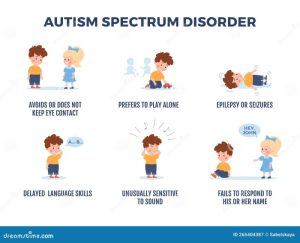
Exploring ways to tackle anxiety and stress in school-aged children unveils a critical aspect of their well-being. This journey delves into the depths of understanding and managing these challenges, offering insights and strategies for parents, teachers, and caregivers alike.
Delving deeper into the impact, recognition, and effective strategies to navigate this terrain, this guide aims to equip you with the necessary tools to support the children in your life.
Understanding Anxiety and Stress in School-Aged Children
Anxiety and stress are common emotional experiences among school-aged children that can have significant impacts on their well-being and academic performance. Anxiety is a feeling of fear, worry, or unease, while stress is the body’s response to a demand or challenge.
In the context of school-aged children, these feelings can arise from various sources and manifest in different ways.
Common Causes of Anxiety and Stress in School-Aged Children
- Academic pressure: High expectations from parents, teachers, or peers can lead to feelings of anxiety and stress.
- Social challenges: Bullying, peer pressure, or conflicts with friends can contribute to anxiety and stress.
- Family issues: Problems at home, such as divorce, financial difficulties, or illness, can impact a child’s mental health.
- Performance anxiety: Fear of failure or not meeting expectations in school activities or exams can trigger anxiety.
How Anxiety and Stress Manifest in School-Aged Children
- Behavioral changes: School-aged children may exhibit changes in behavior such as irritability, restlessness, avoidance of school-related activities, or outbursts.
- Emotional reactions: Anxiety and stress can lead to emotional responses like sadness, fear, anger, or frequent mood swings.
- Physical symptoms: Headaches, stomachaches, fatigue, or trouble sleeping are common physical manifestations of anxiety and stress in children.
Impact of Anxiety and Stress on Child Health

Anxiety and stress can have detrimental effects on the physical health and mental well-being of school-aged children. These negative impacts can also extend to their academic performance and social relationships.
Physical Health Effects
- Increased heart rate and blood pressure
- Headaches and stomach aches
- Weakened immune system leading to frequent illnesses
- Sleep disturbances and fatigue
Mental Well-being Effects
- Feelings of overwhelming worry and fear
- Difficulty concentrating and making decisions
- Low self-esteem and self-doubt
- Increased risk of developing anxiety disorders or depression
Impact on Academic Performance and Social Relationships
- Difficulty focusing in class and retaining information
- Reduced motivation to participate in extracurricular activities
- Social withdrawal and avoidance of social interactions
- Strained relationships with peers and teachers
Recognizing Signs and Symptoms
Anxiety and stress in school-aged children can manifest in various ways, affecting their overall well-being and academic performance. It is crucial for parents and teachers to be able to recognize the signs and symptoms early on to provide the necessary support and intervention.
Common Signs and Symptoms
- Excessive worrying or fear about everyday situations
- Physical symptoms such as headaches, stomach aches, or fatigue
- Difficulty concentrating and restlessness
- Changes in behavior, such as irritability or avoidance of social situations
- Sleep disturbances, including difficulty falling or staying asleep
Differentiating Normal Stress from Anxiety
- Normal stress is often temporary and related to specific events, while anxiety persists over time and may not have an obvious trigger.
- Parents and teachers should pay attention to the intensity and duration of the symptoms, as well as their impact on the child’s daily life.
- If the symptoms interfere with the child’s ability to function or cause significant distress, it may indicate an anxiety disorder that requires professional intervention.
Importance of Early Detection and Intervention
- Early detection allows for timely support and interventions that can prevent the escalation of anxiety and stress in children.
- Addressing anxiety and stress early on can help improve the child’s overall well-being, academic performance, and relationships with peers.
- Effective management of anxiety and stress in school-aged children can prevent long-term consequences on their mental health and development.
Strategies for Managing Anxiety and Stress
Anxiety and stress are common issues faced by school-aged children, but there are various techniques that can help them cope and navigate these challenges effectively.
Role of Mindfulness
Mindfulness techniques, such as deep breathing exercises and meditation, can help children become more aware of their thoughts and emotions. Encouraging mindfulness practices can assist in reducing anxiety levels and promoting a sense of calmness.
Relaxation Techniques
Teaching children relaxation techniques, like progressive muscle relaxation or visualization exercises, can provide them with tools to relax their bodies and minds when feeling overwhelmed. These techniques can be beneficial in managing stress and anxiety effectively.
Positive Reinforcement
Utilizing positive reinforcement, such as rewarding small achievements or efforts, can boost a child’s confidence and motivation. By focusing on positive behaviors and encouraging a growth mindset, children can build resilience and better cope with stressors.
Creating a Supportive Environment
It is essential to create a supportive environment both at home and school to help children deal with anxiety and stress. This includes open communication, establishing routines, and providing a safe space for children to express their feelings. By fostering a supportive atmosphere, children can feel more secure and better equipped to manage their emotions.
Conclusion
In conclusion, managing anxiety and stress in school-aged children requires a multifaceted approach that encompasses awareness, support, and intervention. By recognizing the signs, understanding the effects, and implementing effective strategies, we can create a nurturing environment that promotes resilience and well-being in our children.
Key Questions Answered
How can I help my child cope with anxiety and stress?
Encourage open communication, teach relaxation techniques, and seek professional help if needed.
What are some common signs of anxiety in school-aged children?
Signs may include excessive worrying, irritability, and physical symptoms like stomachaches or headaches.
When should I be concerned about my child’s stress levels?
If stress impacts daily functioning, sleep, or relationships, it may be time to seek further support.






